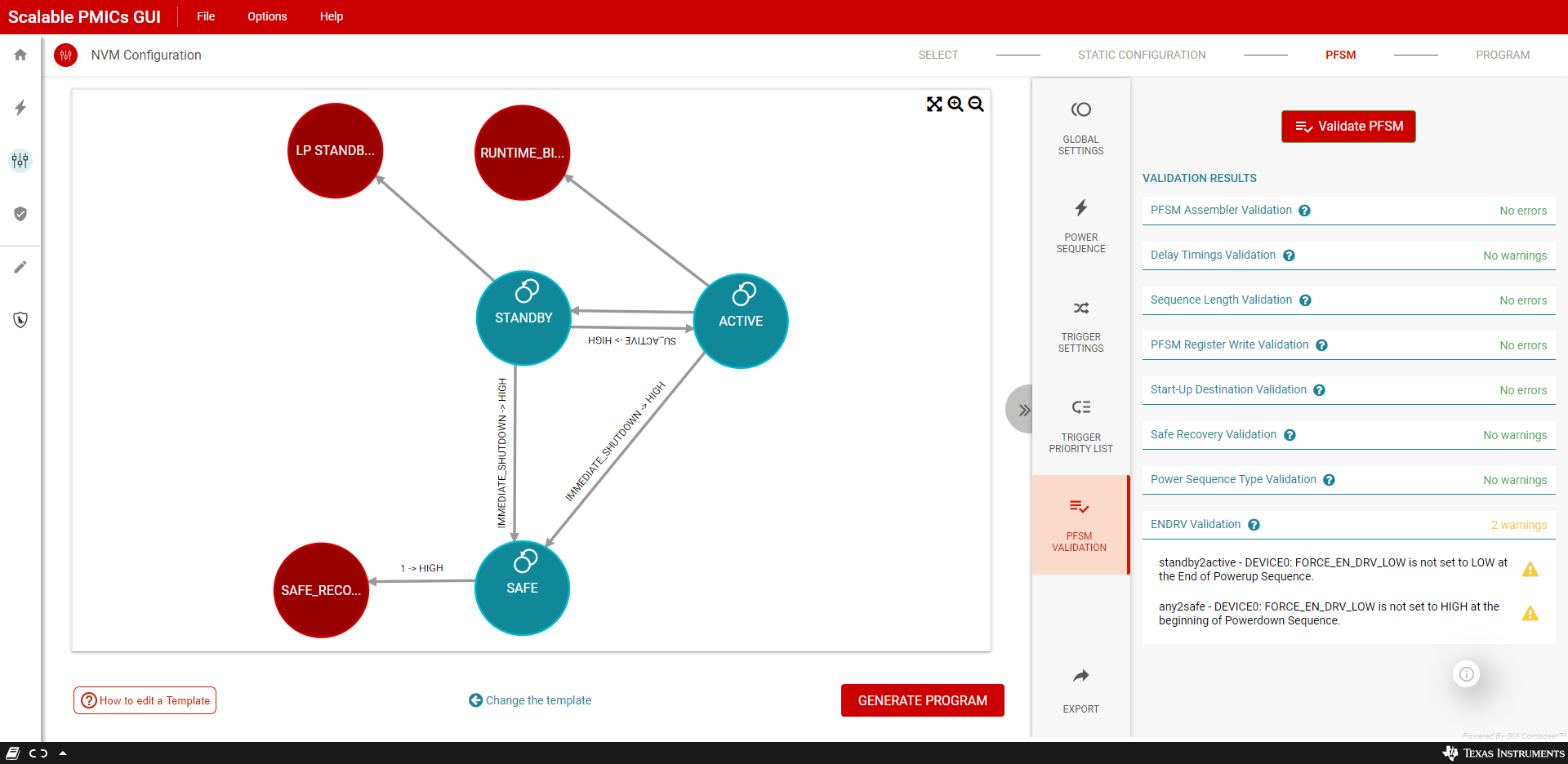SLVUBT8B November 2020 – June 2022 LP8764-Q1 , TPS6594-Q1
- Scalable PMIC's GUI User’s Guide
- Trademarks
- 1 Introduction
- 2 Supported Features
- 3 Revisions
- 4 Overview
- 5 Getting Started
- 6 Quick-start Page
- 7 Register Map Page
- 8 NVM Configuration Page
- 9 NVM Validation Page
- 10Watchdog Page
- 11Additional Resources
- 12Appendix A: Troubleshooting
- 13Appendix B: Advanced Topics
- 14Appendix C: Known Limitations
- 15Appendix D: Migration Topics
- 16Revision History
8.1.2.6 PFSM Validation
The TRIGGER PRIORITY LIST is the last component to building a PFSM configuration. When the configuration is complete, the PFSM validation is made available to check and validate the PFSM content. Within the PFSM Validation view, click the Validate PFSM button.
Within the PFSM view, a list of results will be displayed. Any errors or warning will be accompanied by instructions and recommendations. Errors and warnings will not prevent program generation but indicate a potential risk in device performance within the application. It is recommended to address all errors as this can prevent proper compilation or file generation. Once all errors have been addressed, click the GENERATE PROGRAM button to move to the PROGRAM perspective.
 Figure 8-29 PFSM Validation
Results
Figure 8-29 PFSM Validation
Results